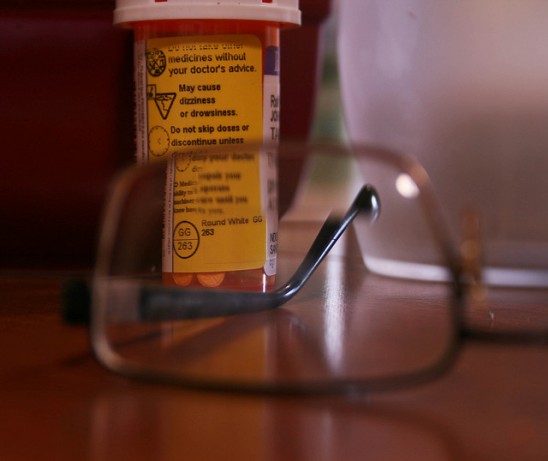
Once, when I was a young doctor, I saw an elderly lady in urgent care who complained of severe constipation. She’d already seen several doctors but with no luck. I confidently put her on some stuff that would really clean her out, and I referred her to a great colleague. When I ran into this doctor later, I asked how things had gone. “Great!” he said. “Only one problem. When she said constipation, she meant diarrhea.”
Welcome to the world of medical miscommunication. We hear a lot about health insurance and rocketing health costs and shortages of primary care physicians. But so many of the problems between patients and medical providers today just come from poor communication. When I look over patient surveys, the most common complaints I see are things like “My doctor doesn’t listen to what I’m telling him,” or “I told her about what happened, but she was too busy writing to listen to what I was saying.”
 Remember, physicians can do only three things: carry out procedures, prescribe medications, and give advice. They have years of training in procedures and generally do those well. They also do pretty well in medication, even if some tend to go overboard. But giving advice is another story. Everyone struggles to communicate properly, but, in medicine, lack of time, jargon, fear, language, and even status make the problem unusually severe. You wouldn’t believe how many people are taking medications without any idea of why they’re taking them. You also wouldn’t believe how often people say yes to a procedure without any idea of what they’re saying yes to.
Remember, physicians can do only three things: carry out procedures, prescribe medications, and give advice. They have years of training in procedures and generally do those well. They also do pretty well in medication, even if some tend to go overboard. But giving advice is another story. Everyone struggles to communicate properly, but, in medicine, lack of time, jargon, fear, language, and even status make the problem unusually severe. You wouldn’t believe how many people are taking medications without any idea of why they’re taking them. You also wouldn’t believe how often people say yes to a procedure without any idea of what they’re saying yes to.
Is there anything that patients can do about it? Yes, and it’s not too hard. You’ll be getting much better medical care if you do five very simple things:
1. Cut through the jargon by asking questions
Every profession, from medicine to plumbing, has its own jargon. Doctors talk in technical terms all the time, but patients often are too shy to ask what they mean. Don’t be too shy! It’s your doctor’s job to help you understand.
At the same time, don’t trot out technical terms of your own. Patients often use medical terms incorrectly, and doctors take them at face value. It doesn’t do any good for you to tell your doctor you have meningitis when what you really mean is you have laryngitis.
Finally, make sure both of you are asking a lot of questions. If my colleague hadn’t asked the lady with diarrhea about her symptoms, he would’ve treated her for constipation, as I did. Asking for clarification is much easier than fixing a mistake.
2. Before you go in, write down your questions and ailments for the doctor–and bring an extra copy for you to write notes, for yourself.
Have you ever gone to the doctor and then come home realizing you forgot to bring up something that’s been wrong? The way to prevent that problem is to write down everything you want to discuss with your doctor before you go into the office.
Provide as much detail as possible. Include the history of your medical issue and what sort of other treatment you’ve sought for it. At the doctor’s office, give one copy to the receptionist as soon as you arrive, so that your doctor can review it even before your appointment begins. This will also go into your medical record. You won’t forget to ask the necessary questions–and, just as important, your clinician won’t forget to answer them. And you can use your own copy to write down the answers to your questions.
Writing stuff down in advance also helps prevent you from displays of stoic bravado once your doctor walks into the room. Recently, I accompanied a friend of mine to her orthopedist. She’d broken her foot not long ago and was still in a lot of pain. “How’s the foot?” the orthopedist asked. “Good,” she answered. My jaw dropped at this about-face. Not surprisingly, the orthopedist didn’t suggest any new approaches to her healing, and my friend remained in pain. If she’d recorded her pre-appointment thoughts in writing, she’d have had her own words in front of her to remind her of her real feelings–and her doctor would have had a copy of them, too.
3. Create your own health record–it’s easier than you think
We talk a lot about Electronic Health Record technology, which has a lot of promise, but for now most of us are a lot better off just creating our own health record. Simply get a paper or plastic folder and put your health documents in it.
Here are the documents you’ll need: your laboratory tests, biopsies, x-rays, imaging studies, and anything that has been identified as abnormal. (And don’t worry about asking your doctor for a copy of these records. It’s your body, and we are generally happy when someone takes an interest!) If you’ve been hospitalized, get a copy of your discharge summary, surgical report, and pathology reports. (The rest you can skip. Don’t waste your money.) Make sure someone close to you knows where you keep it.
When you go for a medical visit, take your health folder with with you. If your doctor asks about an old blood test or an x-ray, you’ll have the records right there. You won’t have to repeat lots of tests that you’ve already had. If your practitioner mentions some abnormal test result on your visit, ask for a copy while you are there, before you forget.
How much agony can this save? I once saw a patient who was a long-time smoker with a deep cough and an ominous shadow on his latest chest x-ray. I asked when he’d last had a chest x-ray. “Oh, 20 years ago, back at the VA,” he answered. What followed was a paper chase of many weeks, while the man and his family made arrangements for what they thought would be the final weeks of his life. When we finally were able to get the film, it revealed an identical mass from 20 years ago. It wasn’t cancer.
4. Get instructions in writing
Practitioners give verbal instructions to their patients about what to do with their medications or how to exercise, etc., but often these instructions don’t survive the trip to the street. They’re quickly forgotten or misremembered. They’re also misunderstood. One study found that three out of four ER patients fail to comprehend the instructions given to them by doctors. (I’ve seen this myself when people have come up with their own terrible ideas for what to apply to stitches–things like paint thinner, even perfume.) So try to get any instructions from the doctor in writing. Many clinicians have printed instructions sitting in their offices for the asking
5. Take notes
If your doctor doesn’t have printed instructions, write down your own instructions. Write down whatever else your doctor is saying, too. If you can’t do it in the examination room, do it immediately afterward in the waiting room. Now you won’t forget, and you won’t get it wrong. And take satisfaction in being one of the all-too-rare patients who take the lead in getting the right information to the right people. It’s the healthiest sort of communication you can have.
Ken Murray, MD is Clinical Assistant Professor of Family Medicine at USC.
*Photo courtesy of Chapendra.




Send A Letter To the Editors